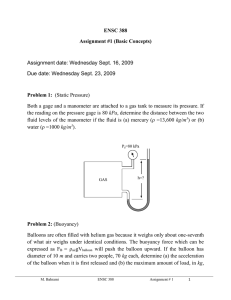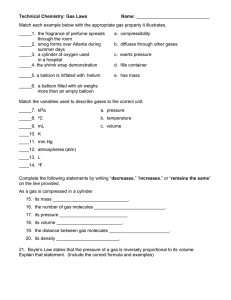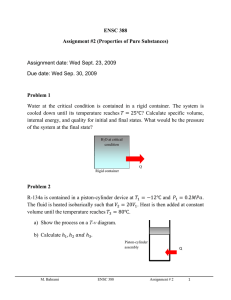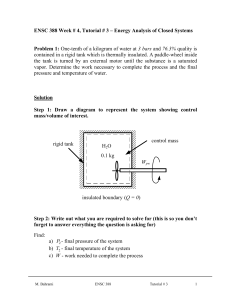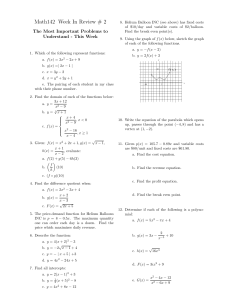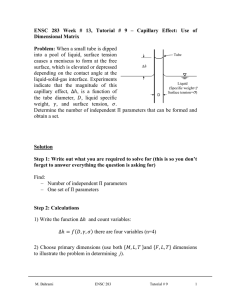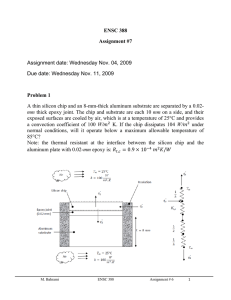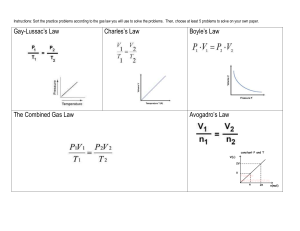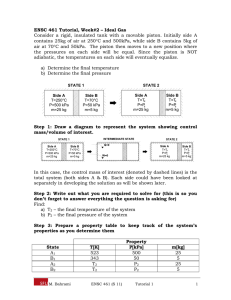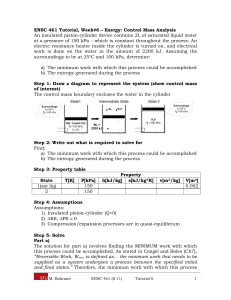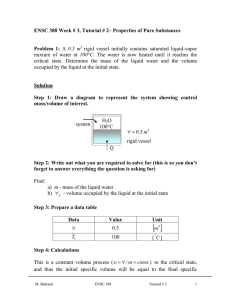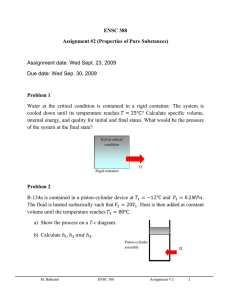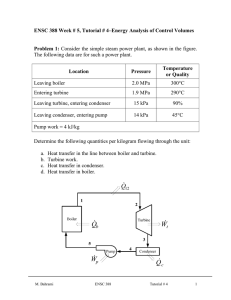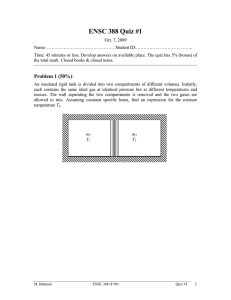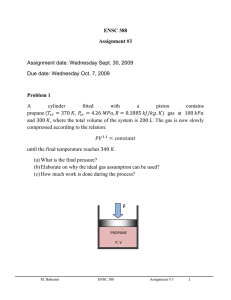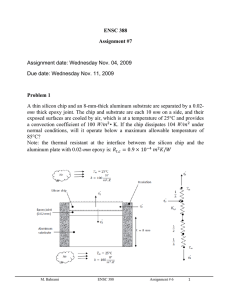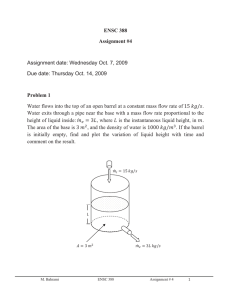ENSC 388 Assignment #1 (Basic Concepts) Problem 1:
advertisement
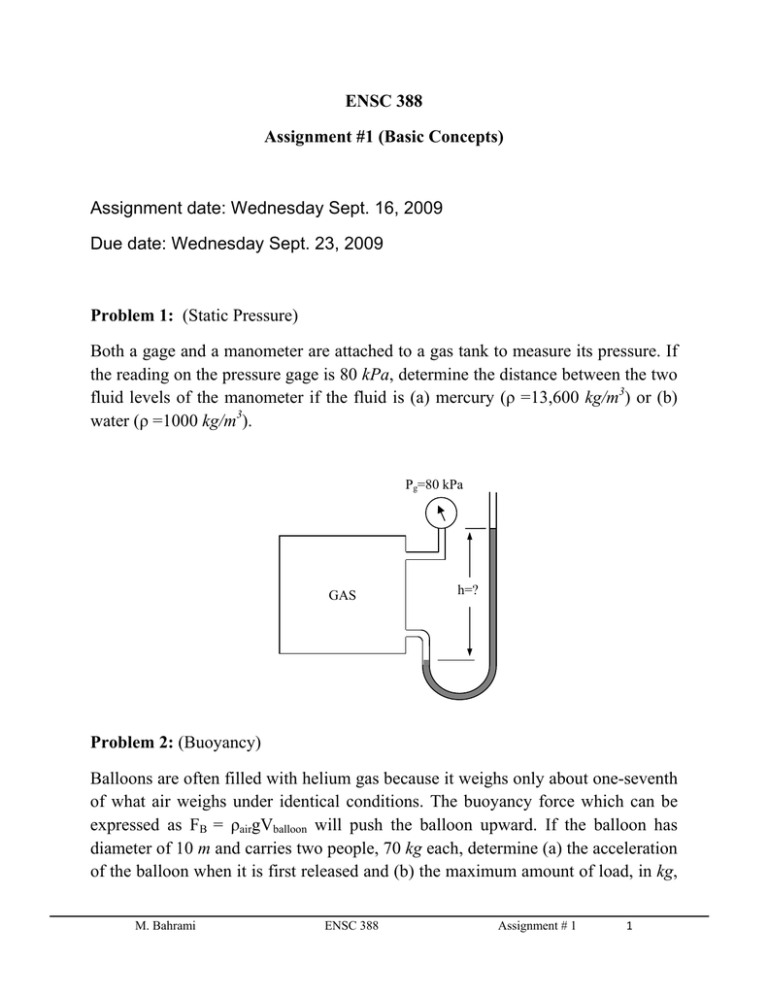
ENSC 388 Assignment #1 (Basic Concepts) Assignment date: Wednesday Sept. 16, 2009 Due date: Wednesday Sept. 23, 2009 Problem 1: (Static Pressure) Both a gage and a manometer are attached to a gas tank to measure its pressure. If the reading on the pressure gage is 80 kPa, determine the distance between the two fluid levels of the manometer if the fluid is (a) mercury (ρ =13,600 kg/m3) or (b) water (ρ =1000 kg/m3). Pg=80 kPa GAS h=? Problem 2: (Buoyancy) Balloons are often filled with helium gas because it weighs only about one-seventh of what air weighs under identical conditions. The buoyancy force which can be expressed as FB = ρairgVballoon will push the balloon upward. If the balloon has diameter of 10 m and carries two people, 70 kg each, determine (a) the acceleration of the balloon when it is first released and (b) the maximum amount of load, in kg, M. Bahrami ENSC 388 Assignment # 1 1 the balloon can carry. Assume the density of air is ρ =1.16 kg/m3, and neglect the weight of the ropes and the cage. (Answers: 16.5 m/s2, 520.6 kg) HELIUM D=10 m ρ=ρair/7 m=140 kg Problem 3: (Hydrostatic pressure) The lower half of a 10-m-high cylindrical container is filled with water (ρ =1000 kg/m3) and the upper half with oil that has a specific gravity of 0.85. Determine the pressure difference between the top and bottom of the cylinder. (Answer: 90.7 kPa) OIL ρs=0.85 h=10 m WATER ρ =1000 kg/m3 M. Bahrami ENSC 388 Assignment # 1 2
